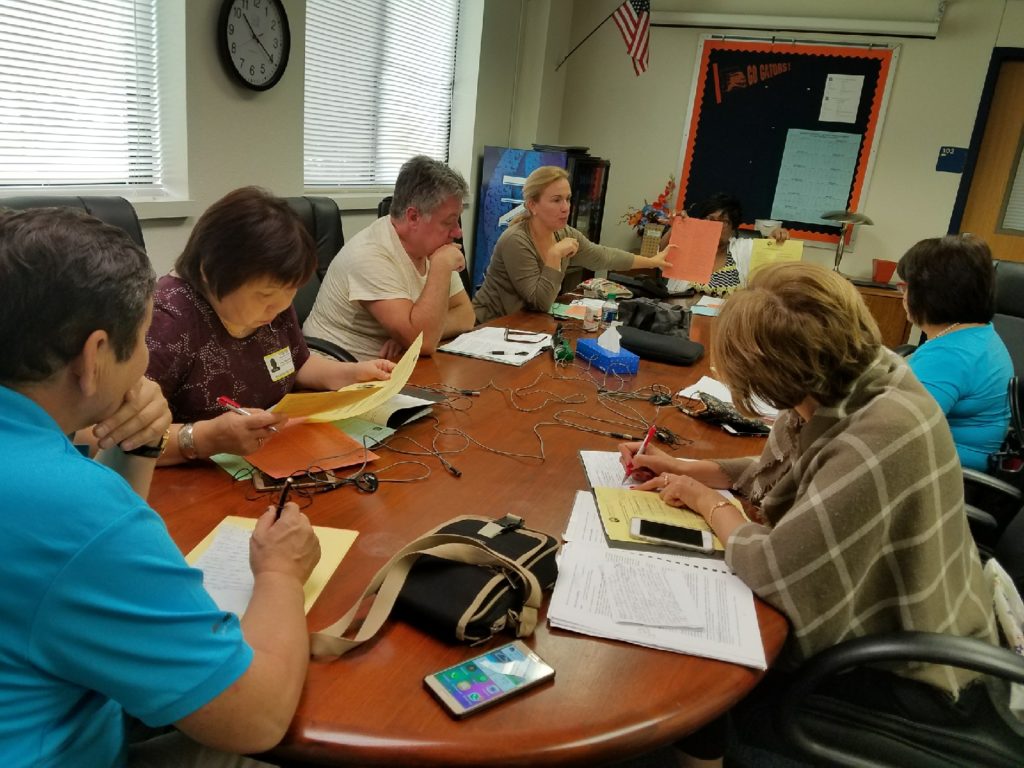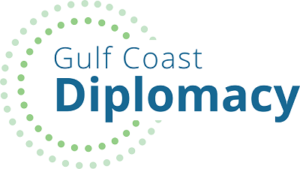In October, a group of four visitors from Kazakhstan arrived in Pensacola as part of an U.S. State Department International Visitor Leadership Program (IVLP) project titled Teaching STEM in English. The professional objectives were “to explore best practices in multilingual and STEM education models for students grades Kindergarten through 12th; to learn about extracurricular programs to encourage youth engagement in STEM fields; to discuss topics in school management and classroom education; and to explore teacher training and education models for multilingual and STEM education.”
The visitors were first welcomed with a community coffee where they engaged in conversation focusing on various topics. Locals in attendance included hostess Pamela Schwartz, Julie Connerley, and Laura Johnson.
From there they traveled to Naval Air Station Pensacola for lunch and exploration at the National Naval Aviation Museum, and at the National Flight Academy Operations Director Mark Curley highlighted STEM education in the United States by inviting the group to explore the academy’s phenomenal learning environment.
The visitors also spent time at Escambia High School (EHS) where they were accompanied by City of Pensacola Councilmember Jewel Cannada-Wynn who serves as the Dean of Students at EHS. Councilmember Cannada-Wynn provided an introduction to the city and gave an overview of the local public school system. The visitors observed STEM classes and met EHS educators before traveling to the office of Superintendent Malcolm Thomas who answered the group’s questions on language immersion and STEM education.
At Warrington Middle School, Principal Regina Lipnick discussed the technology used for flight simulations in their aviation academy, their experiences with the program curriculum, and meeting the needs of diversity in learning development. At the Lighthouse Private Christian Academy, Headmaster and Owner Joanna Johannes, along with Colin Hendrickson and Pamela Miller, discussed the school’s mission, the diversity of the program, and program implementation at their bilingual immersion program.
Mutual dialogue furthers knowledge and inspiration. It is not just the international visitors who benefit from the connections created through citizen diplomacy. By interacting with visitors such as these from Kazakhstan, educators are encouraged to explore best practices with their international colleagues. For students, geography moves from a flat map on the wall to an extended hand and warm smile. Thanks to the generosity of the community and to the enthusiasm of local educators, this project was a success.

